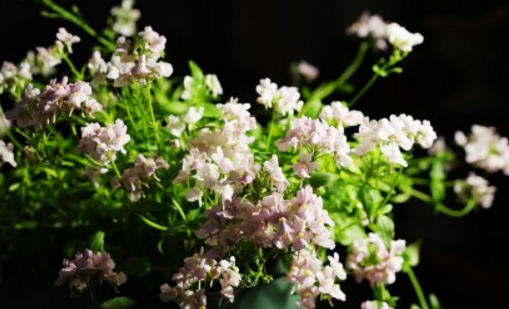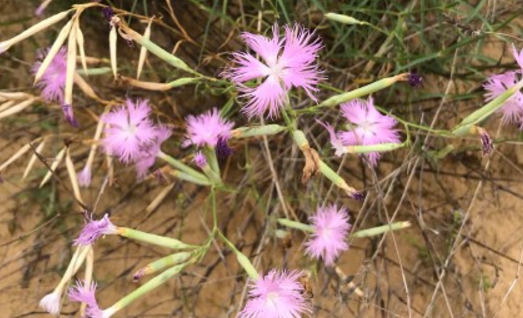What is the utilization value of Phytolacca acinosa? How do you breed? Common pest control?
Pokeweed (PhytolaccaacinosaRoxb) is a sturdy perennial herb of Phytolacca, so what is the utilization value of Phytolacca? How do you breed? Common pest control? It is understood that as a green manure in fertile fields, Phytolacca is very rich in nitrogen, phosphorus and potassium, and its fertilizer effect is very significant. production practice has proved that the fertilizer effect of Phytolacca is better than that of other grasses and leaves, on the one hand, it has more nutrients than Phytolacca itself. on the other hand, it is because the stems and leaves of commercial land are delicate, easy to decompose, and easy to be absorbed and utilized by crops.

What is the use value of Phytolacca?
1. The green manure value of Phytolacca acinosa
As the green manure of fertilizer field, Phytolacca is rich in nitrogen, phosphorus and potassium, and the fertilizer effect is very significant. the production practice has proved that the fertilizer effect of Phytolacca is better than that of other grasses and leaves, on the one hand, it has more nutrients than Phytolacca itself. on the other hand, it is because the stems and leaves of Phytolacca acinosa are delicate, easy to decompose, and easy to be absorbed and utilized by crops.
2. The manganese accumulation value of Phytolacca acinosa
Soil heavy metals are the focus of attention in recent years, heavy metal pollution has a significant impact on the environment and human health, among which manganese is one of the important research objects. The accumulation of manganese in the soil is non-degradable, which makes the treatment more difficult. At present, some investigations have proved that Phytolacca can obviously enrich manganese and can effectively reduce the content of manganese in soil.
3. The bio-pesticide value of Phytolacca acinosa
It is reported that the dried Phytolacca fruit can be ground into dry powder and sprinkled in water to kill snails with Schistosoma japonicum, and its efficacy is not easily disturbed by the external environment, and its toxicity to mammals is also very low, so it is a very safe biological pesticide.
4. Edible value of Phytolacca
At present, there are two kinds of Phytolacca acinosa distributed in China, one kind of stem is purplish red, this kind of pokeweed is poisonous and cannot be eaten, and the other kind of stem is green. This kind of Phytolacca seedlings is edible and is a kind of high-quality wild vegetables. the buds germinated in the following spring can be eaten.
5. The ecological value of Phytolacca.
The root of Phytolacca acinosa is fleshy, the root distribution is deep and wide, and the effect of soil fixation is very significant. the aboveground part of Shang land grows and propagates rapidly, and the effect of water and soil conservation is strong.
Second, how to reproduce?
The propagation mode of Phytolacca can be divided into seed propagation and fleshy root colonization. And the way of reproduction is very simple.
Seed propagation
The sowing time can be fixed in February of each year. Because of the function of soil and water conservation, a small shallow trench can be dug on the wall of the terrace and planted, with eight to ten seeds in each shallow trench. Then cover with a layer of soil, it is also said that covered with charred plaster, the effect will be better. When the seedlings emerge one after another, in each pile of seedlings, choose to keep the robust seedlings that grow, and pull out the rest. After the seedlings grow to 10 centimeters, choose cloudy days or sunshine is not enough time for transplanting.
Fleshy root colonization
The best time for fleshy root colonization is from mid-November to mid-December. Select the place where the root has buds to cut the skin, then apply plant ash, sow, and finally cover the top with a layer of 3-4 cm of soil, and then apply high-quality agricultural fertilizer. Pay attention to proper watering.
Third, prevention and control of common diseases and pests?
1. Phytolacca aphids and their control.
Aphids, commonly known as "putty", like to suck juice in young parts of plants and also like to "eat" bugs. Aphids come in many colors, but our most common ones are green. The leaves of plants damaged by aphids are prone to yellowing and are easy to be accompanied by coal fouling disease.
Control measures of Phytolacca acinosa aphid
If there is an outbreak of aphids, 1000 times diluted aldicarb and aldicarb can be sprayed every other week. If there are few aphids, you can use a brush to sweep away bugs.
2. Phytolacca acuminata and its control.
Commonly known as "Xiao Hei Fei", the plants harmed by it will be depressed, their immunity will decline, and they will even be susceptible to fungi, followed by other diseases such as red star disease.
Control measures of Phytolacca acuminata
In the process of Phytolacca cultivation, it is necessary to ensure that the cultivation medium is as transparent as possible, can be mixed with gravel, add less peat or soil, usually try to keep the soil in a dry state, not long-term moisture.
3. Phytolacca root rot and its control.
As the name implies, root rot is caused by the infection of bacteria, the ability of the plant to absorb water and nutrients is weakened, and the aboveground part of the damaged plant withered and withered, which will eventually cause the death of the whole plant.
Control measures of Phytolacca root rot
Select good drainage plots for planting; timely drainage in the rainy season; if necessary, pentachloronitrobenzene can be used for soil disinfection.
Time: 2019-03-16 Click:
- Prev

What is the breeding method of dragon noodle flowers of Scrophulariaceae? How do you breed? What's the use?
Dragon noodle flower, also known as capsule distance flower, love Missy, Nai Mei West Asia, so what is the breeding method of dragon noodle flower? How do you breed? What's the use? According to the data, dragon noodles are plants that prefer warm and sunny climates, and are more afraid of high temperatures when raising dragon noodles.
- Next

The breeding methods and matters needing attention of Caryophyllaceae? How do you breed? What's the use?
The nicknames of qu wheat are wild wheat, stone column flower, ten kinds of Jinghua, bamboo grass flower, mountain qu wheat and so on, so what are the breeding methods and points for attention? How do you breed? What's the use? According to the data, qu wheat is a simple plant for cultivation and watering, and its reproduction is mainly sowing and reproduction, and it can also be propagated separately.
Related
- Fuxing push coffee new agricultural production and marketing class: lack of small-scale processing plants
- Jujube rice field leisure farm deep ploughing Yilan for five years to create a space for organic food and play
- Nongyu Farm-A trial of organic papaya for brave women with advanced technology
- Four points for attention in the prevention and control of diseases and insect pests of edible fungi
- How to add nutrient solution to Edible Fungi
- Is there any good way to control edible fungus mites?
- Open Inoculation Technology of Edible Fungi
- Is there any clever way to use fertilizer for edible fungus in winter?
- What agents are used to kill the pathogens of edible fungi in the mushroom shed?
- Rapid drying of Edible Fungi

